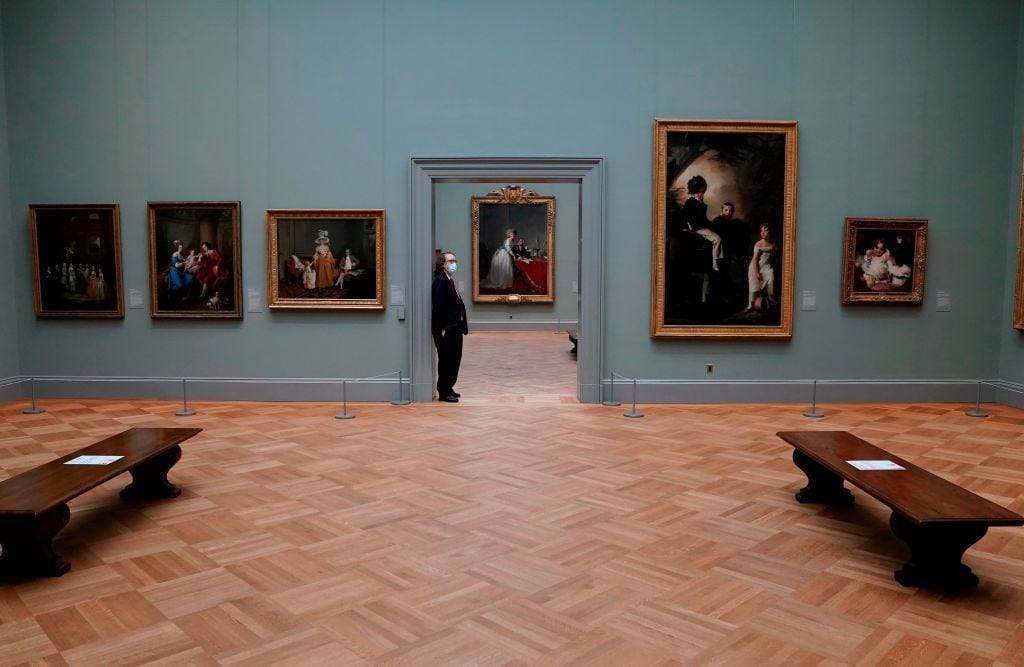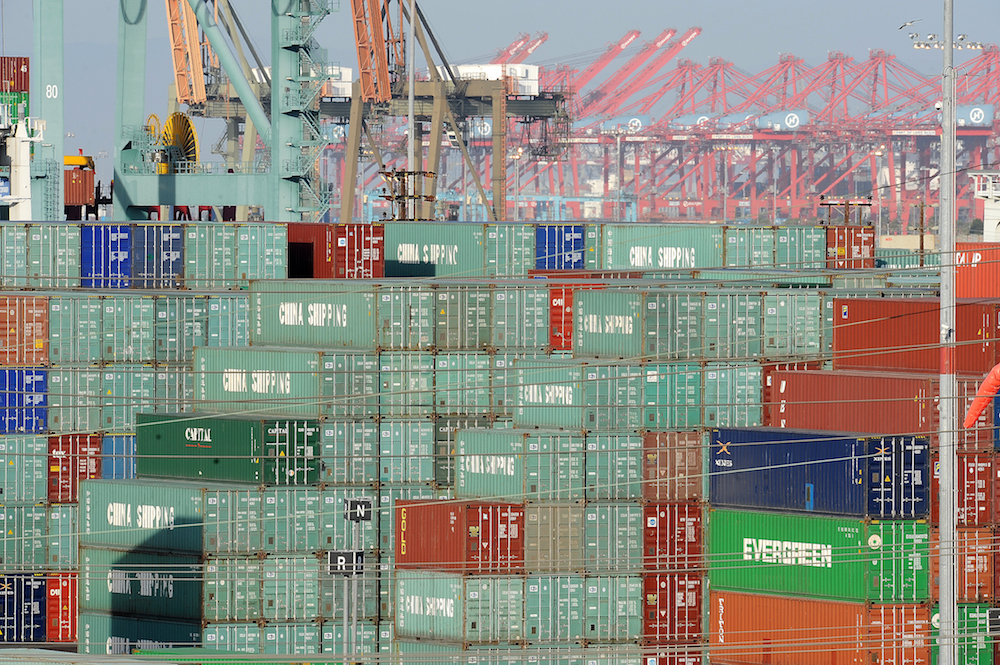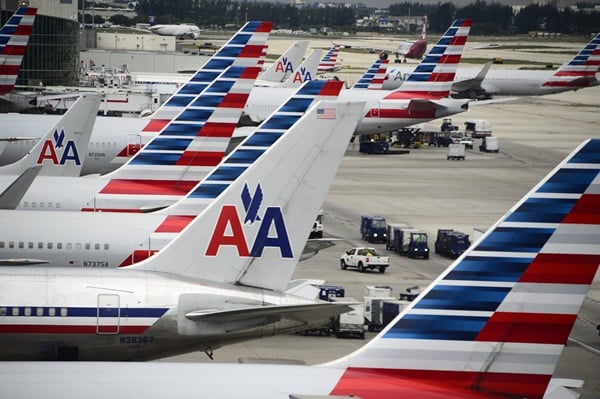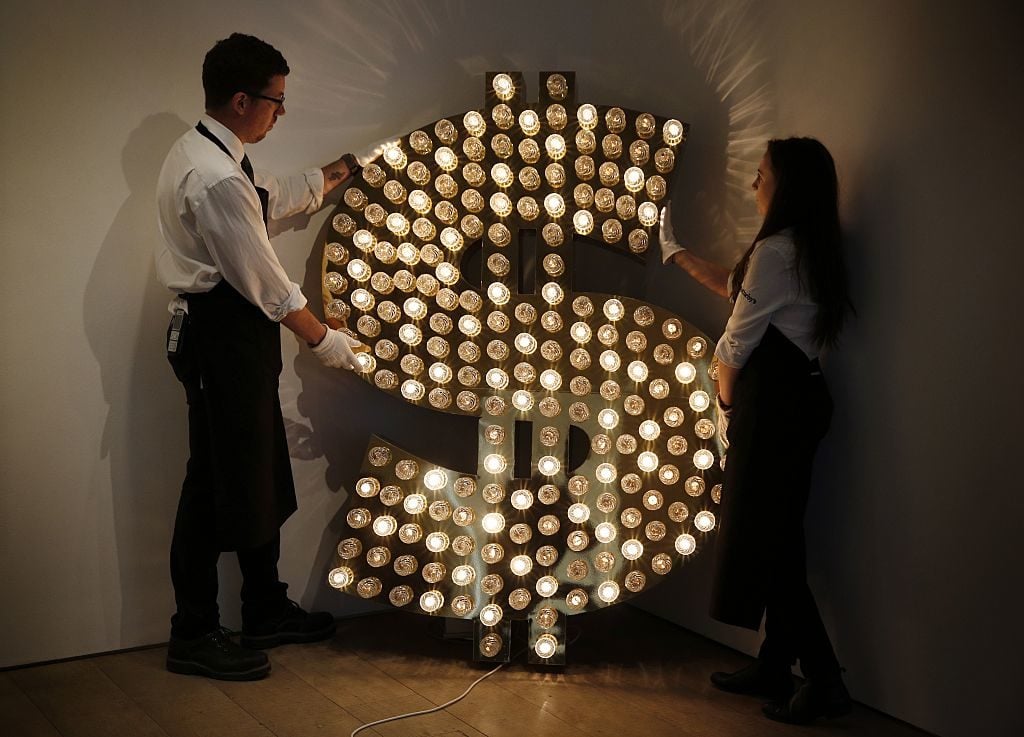Every Wednesday morning, Artnet News brings you The Gray Market. The column decodes important stories from the previous week—and offers unparalleled insight into the inner workings of the art industry in the process.
This week, a distressing alternate meaning of “less is more” …
BRING OUT THE SKIMP
I’m willing to wager that the overwhelming majority of people reading this column have noticed that the prices for all kinds of goods and services we consume have been creeping up over the past several months. I’d go further by gambling that most of you are also well aware of concerns that the inflation we’re all experiencing in our daily lives could erupt out of control and become a very big long-term problem for the economy.
What I hadn’t heard until this weekend, however, was a framework to capture what makes our present inflationary moment unique from past market cycles both inside and outside the arts. A recent joint episode from NPR economics podcasts Planet Money and The Indicator put a name to the phenomenon: “skimpflation.” Planet Money Newsletter specialist Greg Rosalsky concisely defined the term as “a situation where we’re paying the same or more for services, but they kinda suck compared to what they used to be” prior to March 2020. It’s a “worst of both worlds” situation: in all kinds of ways, we’re now receiving less but paying more.
And it’s important to recognize that skimpflation is nowhere near done exerting a heavy strain on either the art business or the larger economy.
Rosalsky’s examples of skimpflation all track with documented trends in the post-vaccine labor market. More dine-in restaurants have been operating with skeleton crews, meaning longer wait times and a less pleasant experience. Fast-food joints are often not especially fast anymore because of similar labor shortages. A growing list of hotels have wiped out complimentary breakfast offerings for guests, and daily housekeeping services are no longer a given. Yet most, if not all, of these businesses have actually raised, not lowered, their prices while the customer experience declined.
Looking back with the framework now in my head, instances of art-business skimpflation have been cropping up in a growing number of my conversations on the professional circuit this fall, too.

An artwork titled Unemployed Journalist (Dave) by Josh Kline exhibited by Modern Art at the Frieze Art Fair in London in October 2018. Photo: Tolga Akmen/AFP via Getty Images.
One New York dealer expressed grim wonder to me at the exorbitant cost they had to absorb to ship the work for a new exhibition on a longer lead time than ever before. At an opening the next night, I overheard an artist and an exhibition designer finding common ground over having paid higher prices to order needed materials that nevertheless ended up stuck in distribution centers for so long that they had to opt for alternate solutions anyway.
In September, a high-ranking executive lamented their firm’s having to book every available art handler they could find for a major de-install because the high percentage of no-shows earlier in the process had left them with no margin for error on their deadline.
A small handful of U.S.-based art professionals and collectors have even asked me whether it’s their imagination that primary-market prices for emerging artists are significantly higher on average than they used to be. If so, the biggest reason why is likely just the cycle of fashion; ultra-contemporary lots, Artnet’s moniker for work made by talent born after 1974, comprise by far the fastest-growing genre in terms of auction sales this year to date, with names like Avery Singer, Emily Mae Smith, and the late Matthew Wong setting new records left and right. Still, it would be logical that rising costs would also force dealers to bump up artwork prices strictly to keep covering overhead.
The good news about artworks is this: while their prices may very well be subject to inflation, they should not be subject to skimpflation. In other words, buyers might have to pay more for the average painting by an emerging artist than they would have pre-shutdown, but there is no reason to believe that the quality of the artwork they’re buying will be worse.
However, there is plenty of reason to believe skimpflation is degrading the experience of exhibiting, viewing, and acquiring artwork. Many for-profit and nonprofit exhibitors alike have been trying to make do with fewer employees for over a year. Market forces bigger than art are now bearing down to drive up costs for rent, supplies, labor, and much else, making it more and more difficult to maintain prior standards.

Museum guards say they’ve been stretched too thin. (Photo by TIMOTHY A. CLARY/AFP via Getty Images)
START OF THE SKIMP
The same causes are largely to blame for skimpflation’s intrusions into the U.S. art world and the larger business world: greater pressure on employers to boost their compensation packages to fill staffing voids on the one hand, and greater demand for goods and services on the other.
Both of these dynamics lead to customers paying higher prices to get what they want—meaning, inflation. (In the worst-case scenario, they can also create a feedback loop resulting in what economists call an “inflationary spiral.”)
What is different about skimpflation, then? Part of the answer lies on the labor side of the equation.
On one hand, many employers have no choice but to skimp for survival. The combination of stimulus payments and enhanced unemployment benefits has meant that many standing on the sidelines of the labor market simply have not been desperate enough for work to accept a raw deal. That has left many business owners struggling to scrape together just enough employees to keep operating. Yet the resulting inefficiencies (along with higher cost of rent, supplies, logistics, etc.) also make it difficult to pull in enough revenue to pay the higher wages needed to fully staff up in these strange market conditions.
A subset of business owners is likely weaponizing these extraordinary economic conditions to maximize profits—unnecessarily skimping on staffing and amenities because they believe the cost savings will more than offset any drop in revenue from decreased demand. It’s a hugely cynical model… but also one that has been consistently employed since the 1980s to create the grossly inequitable, extractive, and shortsighted economy we have today.
Capitalism’s four-decade transformation into a cruel caricature of itself also helped trigger the second root cause of skimpflation: what some business analysts are calling the great supply-chain disruption. It feels like there are about as many moving parts to this problem as in the life-size animatronic T-Rex in Jurassic Park, but the crux is that the shutdown changed consumer behavior practically overnight all around the world, and the international logistics network created in the years leading up to March 2020 has been ill-equipped to respond.
At the very start of the shutdown, key global business leaders lost a bet that everyone is still paying for. Manufacturers and shipping companies cut capacity because they assumed this new crisis would fit the same contours as the crash of 2008.
But they were wrong. Instead of the demand for goods plummeting as it did then, more people started buying more stuff than ever—and asking for all of it to be shipped to their homes, which were being converted on the fly into offices, classrooms, gyms, and so much else.

Containers stacked high at the Port of Los Angeles in San Pedro, California on May 12, 2010. AFP PHOTO / Robyn Beck (Photo credit should read ROBYN BECK/AFP via Getty Images)
Surprise! It turns out there weren’t enough shipping containers in enough of the right places to meet the demand, launching prices into orbit for the shipping capacity available. According to business intelligence firm Section4, “the cost of shipping a 40-foot container along the world’s major trade routes never exceeded $2,000” prior to 2020; by October 2021, the cost had increased to $10,000.
Shipping delays became an even bigger problem because the supply chain in any given market is now intertwined with so many others around the world. Here’s an example from New York Times global economics correspondent Peter Goodman that seems relevant to the art trade:
“Imagine a paint manufacturer in Delaware who has a recipe involving 27 different chemicals, and one of them comes from China. So that paint manufacturer might have all the other chemicals they need, but they can’t get that one in. So they can’t make paint. And as a result of that, the contractors can’t buy paint. So the customer who wants that particular shade now has to pick some other shade, or the job is delayed.”
The final point of failure in the supply-chain nightmare has been the backfiring of public companies’ decades-long push to, as Goodman says, “go as lean as possible.”
In the logistics sector, this mentality has led to the rise of so-called “just in time” shipping. Rather than pay a premium to maintain backup inventory, extra warehouse space, or an expanded fleet of delivery trucks, shareholders have driven more and more manufacturers, shipping companies, and distributors to rely on predictive algorithms to budget for only what they can be reasonably sure they will need, when they can be reasonably sure they will need it.
The result? There was no real contingency plan to counteract the supply-chain crisis, because there was no real contingency capacity to tap into. The backups that previous CEOs would have relied on were instead systematically eliminated over the decades to free up more money to pay dividends, make stock buybacks, or pay out bonuses to current executives.
The art business has been directly responsible for very little of this race to the bottom. After all, there are almost no public companies in the industry, keeping it largely free of the kind of shareholder-driven ruthlessness that has contributed to skimpflation. But if you’re waiting for me to relieve any anxiety you may be feeling about how soon the art market can be free of this mess, I’ve got bad news for you.

American Airlines passenger planes are seen on the tarmac at Miami International Airport in Miami, Florida, June 8, 2015. (ROBYN BECK/AFP/Getty Images)
THE SKIMPFUTURE
Even setting aside commodities shortages and logistics nightmares, skimpflation in the larger economy is poised to continue radiating onto the art economy in other ways. My advice? Bump up your budget estimates and lower your expectations for the day-to-day experience of networking your way around Miami Art Week in three weeks—and while you’re at it, do the same for any art-business trips you’re plotting in 2022.
Expect flight delays courtesy of an airline-pilot shortage (especially now that fully vaccinated international citizens can once again fly into the U.S.), longer wait times and pricier fares at your destination for cars hailed by app (partly thanks to oil prices spiking), and the longest art-world dinners of your life as restaurants scramble to serve full-capacity crowds.
I suspect we’re also nearing the end of the road for the one place in the art economy where dealers have actually been able to get more for less this year: art fairs. Since the calendar flipped to 2021, expo organizers have been doling out unprecedented discounts, give-backs, and “one-time” financial contingencies to exhibitors wary of getting back onto convention center floors in an era where social distancing and mask mandates are still depressingly front of mind.
It’s unlikely these promos will continue once we’ve surpassed the two-year anniversary of a certain mysterious malady’s emergence in Wuhan. Most major art fairs have to satisfy their biggest investors, nearly all of whom have multinational interests that extend well beyond the boutique art trade.
Don’t bank on the root causes of skimpflation shriveling up anytime soon, either. True, the U.S.’s October jobs report was strong, but multiple months preceding it were discouraging. Even if the labor market does unfreeze in a longer-lasting way, how many consumers who shifted the majority of their spending to e-commerce during the shutdown are eager to start lugging bags and boxes home from physical stores again, especially as the holiday shopping season roars to life?
As long as the global supply chain remains under duress, skimpflation will be a part of our lives inside and outside the art business. So from sourcing and shipping materials, to experiencing and acquiring artwork, brace yourself to get less for more, more often.
[Planet Money and The Indicator]
That’s all for this week. ‘Til next time, remember: sometimes, instead of getting what you pay for, you end up paying for whatever you can get.
Follow Artnet News on Facebook:
Want to stay ahead of the art world? Subscribe to our newsletter to get the breaking news, eye-opening interviews, and incisive critical takes that drive the conversation forward.









